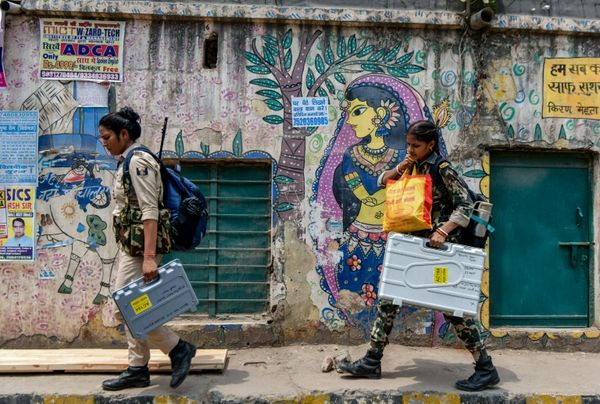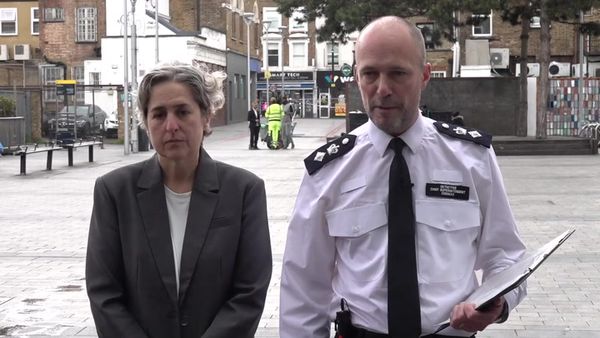
Feral horses in Kosciuszko national park will be shot from the air following a public consultation process, with the New South Wales environment minister, Penny Sharpe, declaring it essential for protecting the park’s threatened wildlife and ecosystems.
Sharpe said the decision to amend the park’s management plan to allow aerial culling of feral horse populations came after 82% of 11,002 submissions from stakeholders supported the measure in addition to other existing control methods.
“There are simply too many wild horses in Kosciuszko national park. Threatened native species are in danger of extinction and the entire ecosystem is under threat. We must take action,” she said.
“I want to make sure our national parks staff have all the options they need to reach the population target and protect this precious alpine environment.”
Sharpe said she understood the decision would upset some people and she empathised “with those who feel distressed that we must undertake control programs”.
But she said effective management of horse populations had been paused for too many years and the park has suffered.
Sharpe said that as environment minister with responsibility for national parks, she could not stand by as horses caused damage to ecosystems and Indigenous cultural heritage.
“I can’t stand by and say the status quo is adequate, because the harm and damage that’s happening to that park is too great,” she said.
It comes after the final report of a Senate inquiry into the damage thousands of feral horses were causing in the Australian Alps found horses posed an extinction risk to native species, including the critically endangered stocky galaxias fish and the southern corroboree frog.
In May, the federal threatened species scientific committee warned the inquiry that feral horses “may be the crucial factor that causes final extinction” of six critically endangered animals and at least two critically endangered plants.
Released last week, the Senate report said NSW laws protecting feral horses from culling had led to an exponential increase in the population and recommended the state government address this in part by updating the Kosciuszko national park wild horse heritage management plan to allow aerial shooting to help control numbers.
The NSW government had already announced in August it proposed to update the plan to allow for aerial shooting after routine surveys found other control measures were not sufficient to meet the legislated requirement to reduce the number of horses in the park to 3,000 by 2027.
The surveys, conducted November last year, estimated the number of feral horses had increased to 18,814 – up from 14,380 in 2020.
The government’s decision follows years of often toxic debate about how to manage the invasive species.
In September last year, the former Coalition government asked police to investigate an alleged threat to a national parks office in the Snowy Mountains over ground shooting of feral horses in the park.
Aerial shooting will resume with a preliminary program this year that will be used to refine procedures and ensure correct processes are being adhered to.
The federal environment and water minister, Tanya Plibersek, said she strongly welcomed the announcement.
“I love horses but they don’t belong in national parks. Feral horses are causing serious damage to our native plants and animals, including many endangered species in the Australian Alps,” she said.
“This will be a huge help in reducing feral horse numbers and protecting the more than 30 native threatened species that call the Alps home.”
Environment groups that have long called for the use of all available measures to protect the park said the decision was a win for native wildlife and mountain streams.
Jack Gough, the advocacy manager for the Invasive Species Council, said park rangers could “finally get on with the difficult task of removing thousands of feral horses before our mountains and rivers are trampled beyond repair”.
“When it comes to managing the out-of-control feral horse population, we need all available tools in the toolbox. That includes aerial shooting by highly trained professionals using protocols reviewed by independent animal welfare experts,” he said.
“The science is crystal clear and the public and political mood has shifted as Australians have become better informed about the damage feral horses are doing to the high country.”
The Nature Conservation Council of NSW said the damage done by feral horses to alpine environments could not be overstated and the organisation had received an “overwhelming level of engagement from our members on this issue”.
“We believe this is representative of a broader shift in public sentiment as awareness of the impact of feral horses has grown,” the chief executive, Jacqui Mumford, said.
The Australian Brumby Alliance said it was appalled at the decision to resume aerial culling.
“We implore minister Sharpe to strengthen commitment to and resourcing of passive trapping and rehoming as the preferred method of population management, reserving lethal methods to high density areas and designated fragile zones identified in the NSW Wild Horse Act,” the alliance’s president Jill Pickering said.
“Working closely with experienced horse communities will reduce conflict and facilitate rehoming.”






